Science For Monastics 2014
The staff of the Exploratorium Teacher Institute gave two sets of workshops for Tibetan buddhist monks and nuns at the College of Higher Tibetan Studies in Dharamsala India during October 2014.
One workshop was for Geshes
The other workshop was for leaders who are creating hands-on science centers in their monasteries.
Our first day at the college was scheduled to be a rest day to allow us to recover from travel across a dozen time zones. However this is India and we found out we were going to teach our first class in an hour.
Luckily the Teacher Institute prides itself on "Just in time delivery" So we went right to work gathering the materials for our workshop.
Day 1
Eric Muller prepared the getting-to-know-you activity called match-rock. He ran around the campus with a hammer finding a dozen different rocks which he split in two with a hammer. We gave each Geshe one piece of rock.
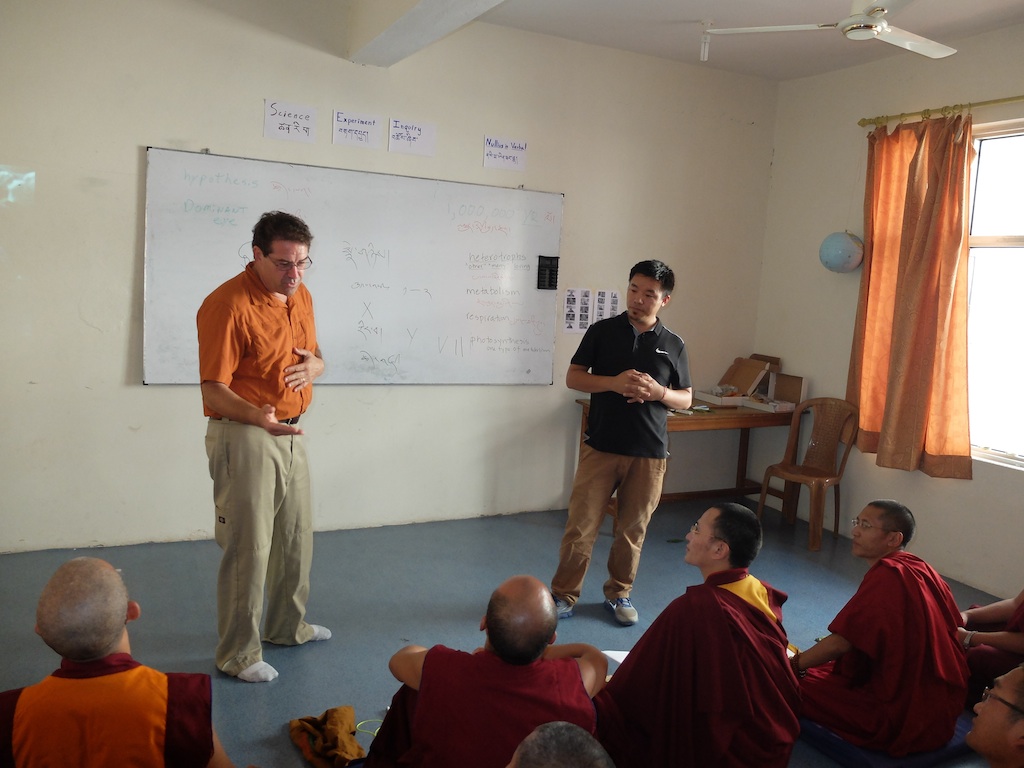
Eric and his translator Nyima
Each Geshe had to write a description of their rock on a post it note and put it on their robe. Then they had to read what other Geshes had written to find the Geshe who had the other half of their rock. But they could only look at their written descriptions not at the rocks themselves.
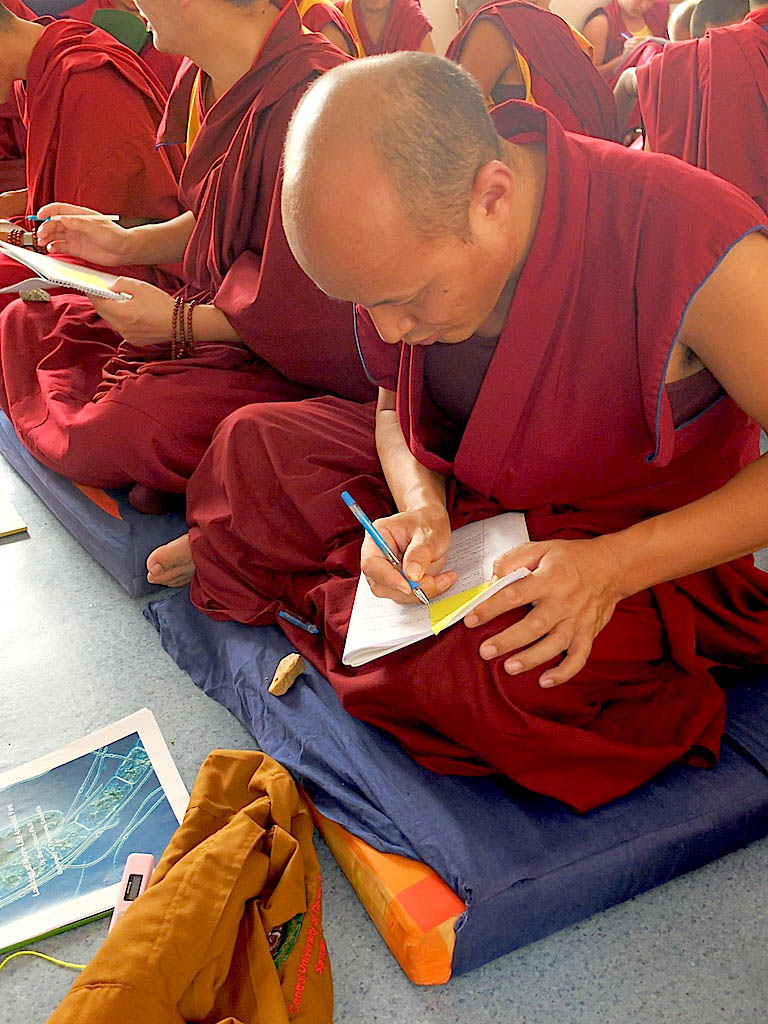
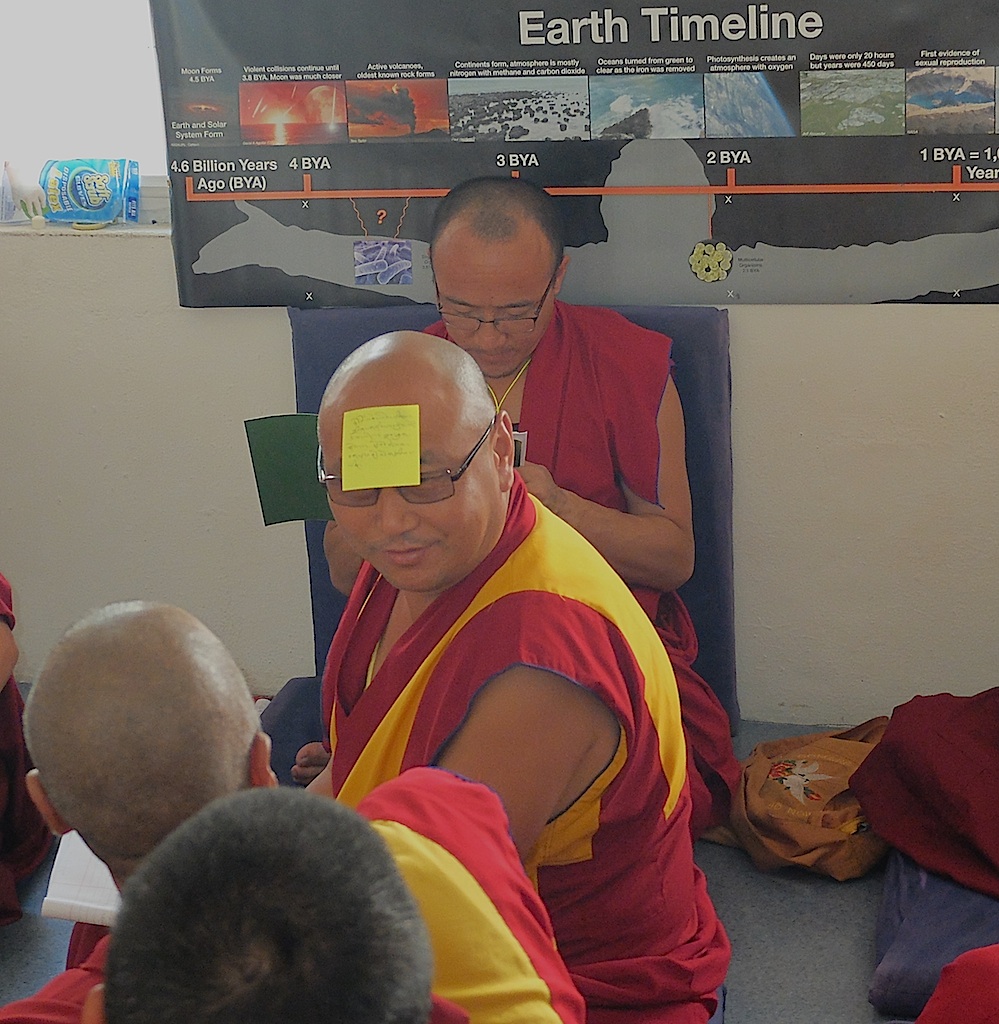
Geshes are playful.
When they found their possible match they paired up and then had to introduce their partner by name and monastery to everyone else.
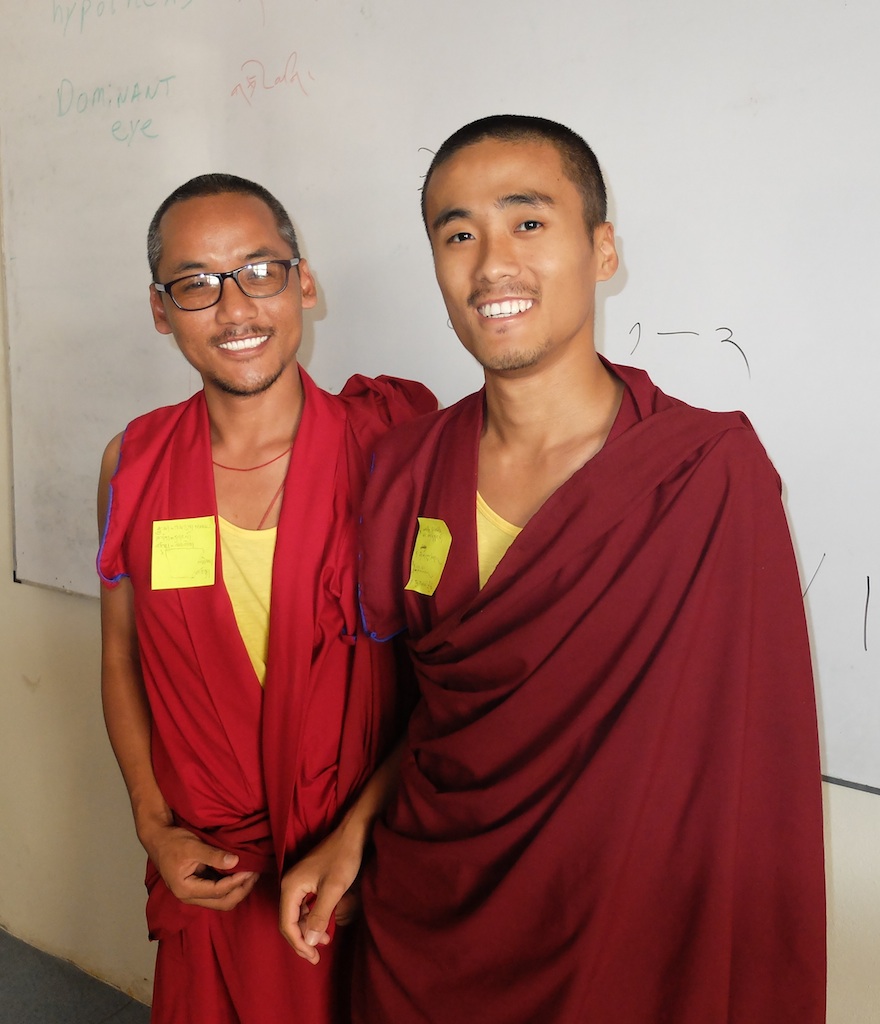
After each pair of introductions they showed their rocks.
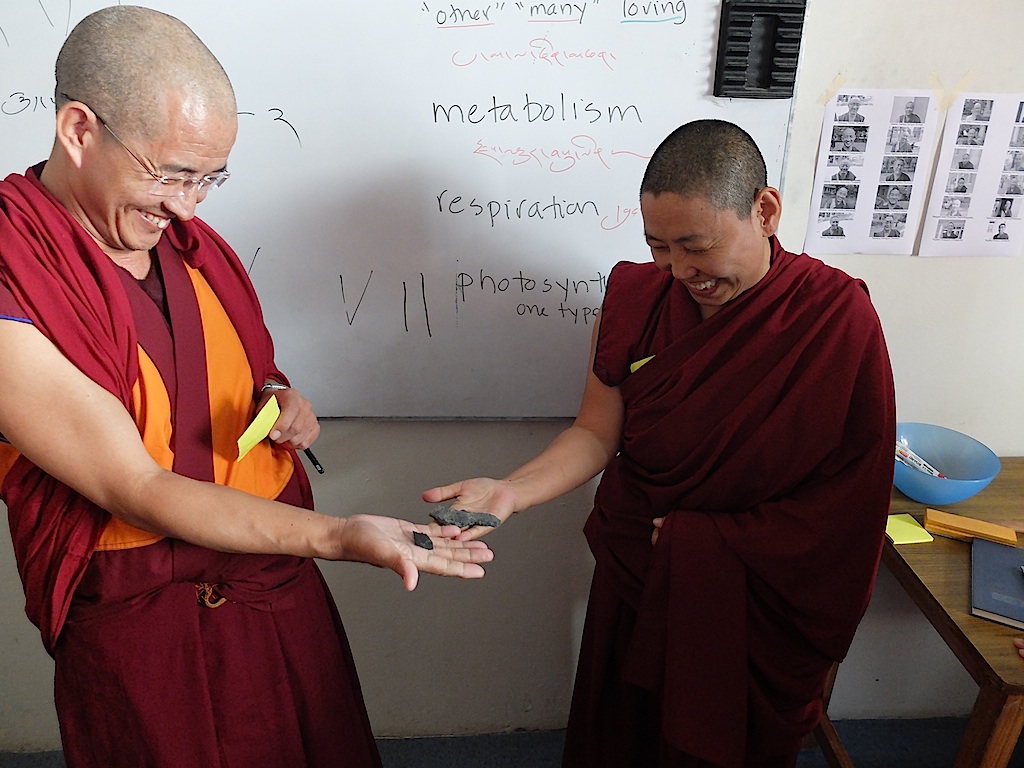
The Geshes did better at this activity than any of the teacher groups we have ever had before.
Then it was my turn.
The Exploratorium is a museum of Science, Art, and Human Perception, so I had the Geshes explore a perception activity.
They stretch a string from their nose to an outstretched hand.
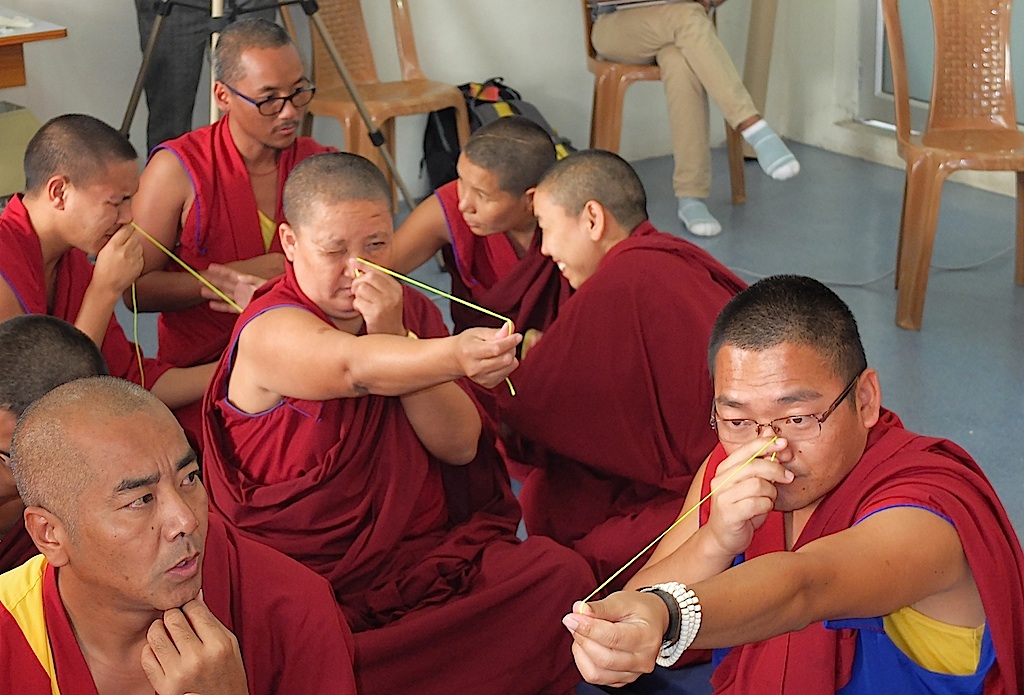
Try this yourself. The geshes reported that they saw different things, most saw two strings while their hands told them there was only 1 string.
Some geshes
saw the string as an X, others as a V, a couple even saw two lines that never crossed.
Some saw one string clearer and the other one faint.
They immediately hypothesized that they saw 2 strings because they had two eyes and we wondered what a 3 -eyed monk would see. They predicted that a three eyed monk would see three strings. I then told them the importance of doing experiments and that now we needed to find a 3 eyed monk.